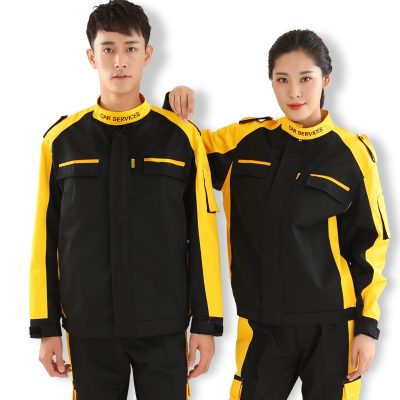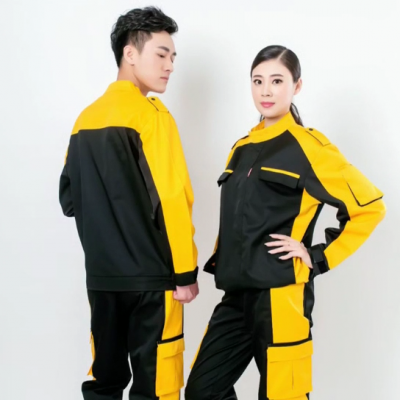Certainly, the versatility of coveralls extends to their various functions across different industries and scenarios. Here’s a breakdown of how coveralls are versatile in terms of their functions:
- Protection from Hazards: Coveralls are primarily designed to offer protection from a wide range of hazards, including chemicals, biological agents, dirt, debris, heat, flames, and more. Their durable construction and full-body coverage shield the wearer from potential harm.
- Contamination Control: In environments where contamination must be minimized, such as cleanrooms, laboratories, and healthcare settings, coveralls act as a barrier between the wearer and the environment, preventing particles or contaminants from entering or exiting the suit.
- Chemical Resistance: For tasks involving exposure to hazardous chemicals, coveralls can be made from chemical-resistant materials that provide a barrier against chemical splashes, spills, and fumes.
- Thermal Protection: In industries involving high heat or flames, flame-resistant coveralls are used to protect workers from burns and other thermal hazards.
- Visibility Enhancement: High-visibility coveralls, often equipped with reflective strips or bright colors, are used in situations where the visibility of workers is crucial, such as construction sites and roadwork zones.
- Insulation and Comfort: Coveralls can be designed with insulating properties to keep workers warm in cold environments, while still providing ease of movement.
- Barrier to Infection: In healthcare settings, coveralls are used as personal protective equipment (PPE) to create a barrier against infections and pathogens, especially in situations where there’s a risk of exposure to bodily fluids.
- Airborne Hazard Protection: Coveralls can be designed to protect against airborne hazards, such as particulates, dust, or microorganisms, by incorporating features like hoods and respirator compatibility.
- Electrostatic Discharge Protection: In industries dealing with sensitive electronics, coveralls can be made from anti-static materials to prevent the buildup of static electricity that could damage equipment.
- Hygiene and Cleanliness Maintenance: Coveralls help maintain hygiene and cleanliness by preventing the transfer of contaminants from one area to another, making them suitable for controlled environments like food processing or pharmaceutical manufacturing.
- Personal Identification and Branding: Coveralls can include patches, logos, and personal identification, which is particularly useful for roles where clear identification is important, such as emergency responders.
- Customized Functionality: Coveralls can be tailored to include specific features such as multiple pockets for tools, adjustable closures for a secure fit, and even integrated cooling systems for use in hot environments.
- Ease of Decontamination: Many coveralls are designed for easy decontamination and cleaning, allowing them to be reused safely in environments where strict hygiene standards are essential.
- Compliance with Regulations: The versatile design of coveralls allows them to meet various safety and industry standards, enabling companies to comply with regulations specific to their field.
The functions of coveralls are adaptable to a wide range of industries and applications, making them a versatile solution for addressing safety, hygiene, and protection needs across different work environments.




















